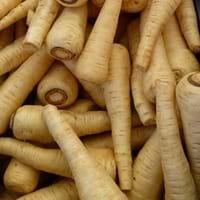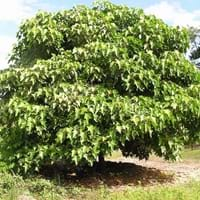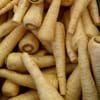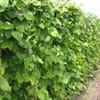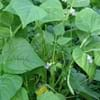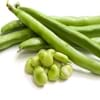Life Span
Biennial and Perennial
Perennial
Origin
Europe, Western Asia
Southeastern Asia, Melanesia, Micronesia, Polynesia
Types
Not Available
-9999
Habitat
waste ground, wastelands
Woodlands
USDA Hardiness Zone
4-9
10-12
Sunset Zone
A1, A2, A3, H1, H2, 1a, 1b, 2a, 2b, 3a, 3b, 4, 5, 6, 7, 8, 9, 10, 11, 12, 13, 14, 15, 16, 17, 18, 19, 20, 21, 22, 23, 24
H2, 23, 24
Habit
Rosette/Stemless
Oval or Rounded
Flower Color
Yellow
White
Flower Color Modifier
Bicolor
Bicolor
Fruit Color
Brown, Black
Light Green, Gray Green
Leaf Color in Spring
Green
Green, Gray Green, Gray
Leaf Color in Summer
Green
Green, Gray Green, Gray
Leaf Color in Fall
Green
Green, Gray Green
Leaf Color in Winter
Not Available
Green
Leaf Shape
Pinnate
Maple shaped
Plant Season
Summer
Spring, Summer, Fall, Winter
Sunlight
Full Sun
Full Sun, Partial Sun
Growth Rate
Medium
Very Fast
Type of Soil
Loam
Loam, Sand
The pH of Soil
Neutral
Acidic, Neutral, Alkaline
Soil Drainage
Well drained
Well drained
Bloom Time
Summer
Indeterminate
Tolerances
Drought
Wet Site, Drought, Salt
Where to Plant?
Ground, Pot
Ground
How to Plant?
Seedlings
Seedlings, Stem Planting
Plant Maintenance
Medium
Medium
Watering Requirements
Average Water Needs, Do Not over Water, Keep the ground moist but not water-logged
Water daily during growing season
In Summer
Lots of watering
Moderate
In Spring
Moderate
Less Watering
In Winter
Average Water
Less Watering
Soil pH
Neutral
Acidic, Neutral, Alkaline
Soil Type
Loam
Loam, Sand
Soil Drainage Capacity
Well drained
Well drained
Sun Exposure
Full Sun
Full Sun, Partial Sun
Pruning
Remove damaged leaves, Remove dead branches, Remove dead leaves
Remove damaged leaves, Remove dead branches, Remove dead leaves
Fertilizers
All-Purpose Liquid Fertilizer
All-Purpose Liquid Fertilizer
Pests and Diseases
Aphids, Armyworm, Cutworms, Downy mildew, Pitch canker, Red blotch
Aphids, Insects
Plant Tolerance
Drought
Drought
Flower Petal Number
Not Available
Single
Fragrant Bark/Stem
Yes
No
Foliage Texture
Fine
Medium
Foliage Sheen
Matte
Matte
Attracts
Butterflies
Birds, Butterflies
Allergy
Stomach burn
Nausea, Vomiting
Aesthetic Uses
Not Available
Cottage Garden
Beauty Benefits
Blood purifying, Good for skin
For treating wrinkles, Moisturizing, used as a dye
Edible Uses
Yes
Sometimes
Environmental Uses
Air purification
Air purification, Shadow Tree
Medicinal Uses
Aphrodisiac
Cramps, Dermatitis
Part of Plant Used
Root
Bark, Fruits, Leaves
Other Uses
Food for animals, Used as a nutritious food item
Can be made into a herbal tea, Making Sweet Scented Oil, Sauces, Used as firewood
Used As Indoor Plant
Yes
No
Used As Outdoor Plant
Yes
Yes
Garden Design
Edible, Herb, Vegetable
Mixed Border, Shade Trees, Street Trees, Tropical
Botanical Name
PASTINACA sativa
ALEURITES moluccanus
Common Name
Parsnip
Candleberry, Candlenut, Kukui
In Hindi
चुकंदर
Aleurites moluccanus
In German
Pastinake
Lichtnussbaum
In French
Panais
Aleurites moluccana
In Spanish
Chirivía
Aleurites moluccanus
In Greek
Είδος δαυκίου
Aleurites moluccanus
In Portuguese
cherivia
Nogueira-de-iguape
In Polish
Pasternak
Nogueira-de-iguape
In Latin
parsnip
Aleurites moluccanus
Phylum
Magnoliophyta
Angiosperms
Class
Magnoliopsida
Magnoliopsida
Order
Apiales
Euphorbiales
Family
Apiaceae
Euphorbiaceae
Clade
Angiosperms, Asterids, Eudicots
Angiosperms, Eudicots, Rosids
Tribe
Not Available
Aleuritideae
Subfamily
Not Available
Crotonoideae
Number of Species
Not Available
Not Available
Season and Care of Parsnip and Kukui
Season and care of Parsnip and Kukui is important to know. While considering everything about Parsnip and Kukui Care, growing season is an essential factor. Parsnip season is Summer and Kukui season is Summer. The type of soil for Parsnip is Loam and for Kukui is Loam, Sand while the PH of soil for Parsnip is Neutral and for Kukui is Acidic, Neutral, Alkaline.
Parsnip and Kukui Physical Information
Parsnip and Kukui physical information is very important for comparison. Parsnip height is 15.20 cm and width 7.60 cm whereas Kukui height is 1,370.00 cm and width 1,520.00 cm. The color specification of Parsnip and Kukui are as follows:
Parsnip flower color: Yellow
Parsnip leaf color: Green
Kukui flower color: White
- Kukui leaf color: Green, Gray Green and Gray
Care of Parsnip and Kukui
Care of Parsnip and Kukui include pruning, fertilizers, watering etc. Parsnip pruning is done Remove damaged leaves, Remove dead branches and Remove dead leaves and Kukui pruning is done Remove damaged leaves, Remove dead branches and Remove dead leaves. In summer Parsnip needs Lots of watering and in winter, it needs Average Water. Whereas, in summer Kukui needs Moderate and in winter, it needs Less Watering.
